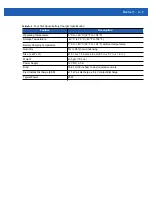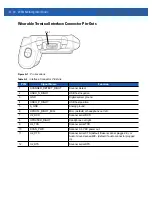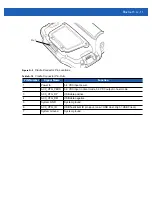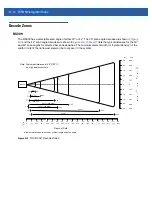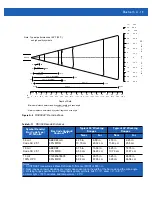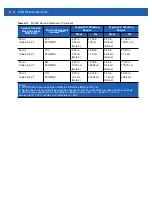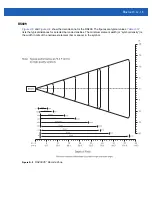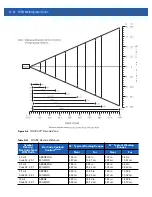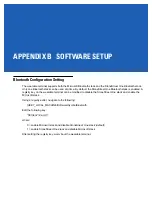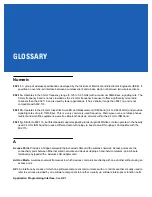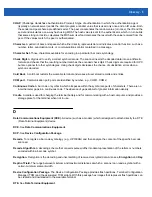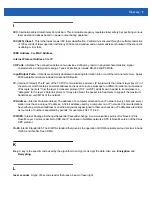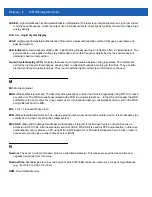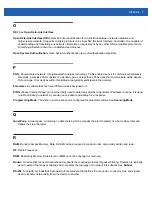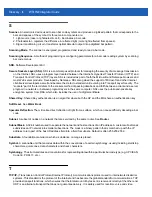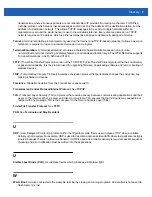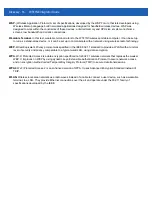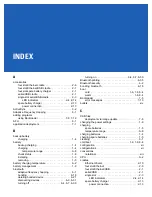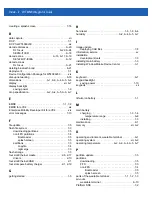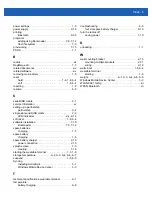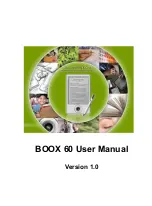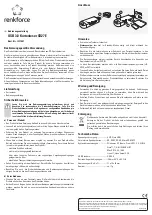
GLOSSARY
Numeric
802.11.
A group of wireless specifications developed by the Institute of Electrical and Electronics Engineers (IEEE). It
specifies an over-the-air interface between a wireless client and a base station or between two wireless clients.
802.11a.
Operates in the 5 GHz frequency range (5.125 to 5.85 GHz) with a maximum 54Mbit/sec. signaling rate. The
5 GHz frequency band is not as crowded as the 2.4 GHz frequency because it offers significantly more radio
channels than the 802.11b and is used by fewer applications. It has a shorter range than 802.11g and is not
compatible with 802.11b.
802.11b.
Operates in the 2.4 GHz Industrial, Scientific and Measurement (ISM) band (2.4 to 2.4835 GHz) and provides
signaling rates of up to 11Mbit/sec. This is a very commonly used frequency. Microwave ovens, cordless phones,
medical and scientific equipment, as well as Bluetooth devices, all work within the 2.4 GHz ISM band.
802.11g.
Similar to 802.11b, but this standard supports signaling rates of up to 54Mbit/sec. It also operates in the heavily
used 2.4 GHz ISM band but uses a different radio technology to boost overall throughput. Compatible with the
802.11b.
A
Access Point.
Provides a bridge between Ethernet wired LANs and the wireless network. Access points are the
connectivity point between Ethernet wired networks and devices (laptops, hand-held computers, point-of-sale
terminals) equipped with a wireless LAN adapter card.
Ad Hoc Mode.
A wireless network framework in which devices communicate directly with one another without using an
access point.
API.
An interface by means of which one software component communicates with or controls another. Usually used to
refer to services provided by one software component to another, usually via software interrupts or function calls
Application Programming Interface.
See
API
.
Summary of Contents for WT41N0
Page 1: ...WT41N0 WEARABLE TERMINAL INTEGRATOR GUIDE ...
Page 2: ......
Page 3: ...WT41N0 INTERGRATOR GUIDE 72E 160600 01 Rev A December 2012 ...
Page 6: ...iv WT41N0 Integrator Guide ...
Page 18: ...xvi WT41N0 Integrator Guide ...
Page 60: ...3 6 WT41N0 Integrator Guide ...
Page 64: ...4 4 WT41N0 Integrator Guide ...
Page 118: ...7 16 WT41N0 Integrator Guide ...
Page 122: ...8 4 WT41N0 Integrator Guide ...
Page 154: ...A 20 WT41N0 Integrator Guide ...
Page 156: ...B 2 WT41N0 User Guide ...
Page 170: ...Index 4 WT41N0 Integrator Guide ...
Page 171: ......

